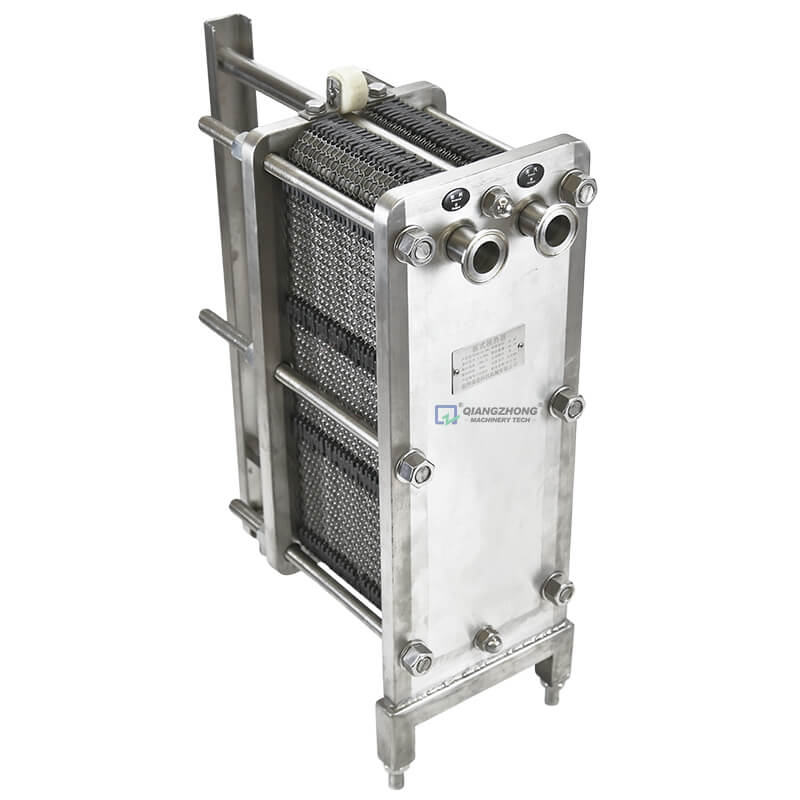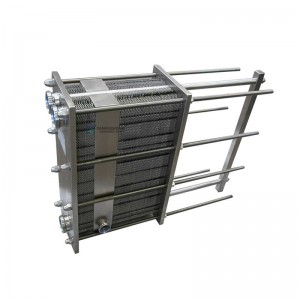Product Parameters
Plate heat exchanger specifications:
There are two types of plate heat exchangers: BR type and BRB type. The specifications of a variety of plate heat exchangers are as follows:
Code: B R 0.13 1.0 8 N I No.: 1 2 3 4 5 6 7
Comments are as follows:
No. 1 represents plate heat exchanger
No. 2 representative plate type is herringbone ripple
No. 3 represents 0.13 type, also means single sheet heat exchange area is 0.13m2
No. 4 represents design pressure 1 .OMpa
No. 5 represents the entire heat exchange area of 8m2
No. 6 represents NBR rubber seal
No. 7 represents the frame shape structure is double-support frame type (also known as hanging type)
Product Structure
The plate heat exchanger is an ideal device for indirect heat exchange and cooling through two different temperature fluids. It is featured by high heat exchange efficiency, high heat recovery rate, small heat loss, small footprint, flexible assembly and installation, simple operation, easy installation and disassembly, long service life, low investment, and safe use. Under the same pressure loss condition, the heat transfer coefficient of the plate heat exchanger is 3-5 times higher than that of the tube heat exchanger. The floor space is only one third of the tube type, and the heat recovery rate can reach more than 90%.
The structure of the exchanger is double-support frame type. The main components include plates, heat exchanger rubber, fixed pressure plate, movable pressure plate, upper/lower guide rods, pillars, clamping screw assemblies, rolling parts, nozzles, etc..
The plate is made of 304 or 316L stainless steel sheet, pressed into various corrugated shapes after shearing, and it generally has ripples type and herringbone type.
These ripples mainly play following three roles:
● Increase the effective heat transfer area.
● Make the media turbulent in the flow channel, slowing the formation of dirt.
● After the plates are assembled, the corrugations of the plates contact each other to form a large number of contacts, which enhances the rigidity and hardness of the plates, allowing them to withstand the large pressure difference between the two flow paths.
Product Showcase






